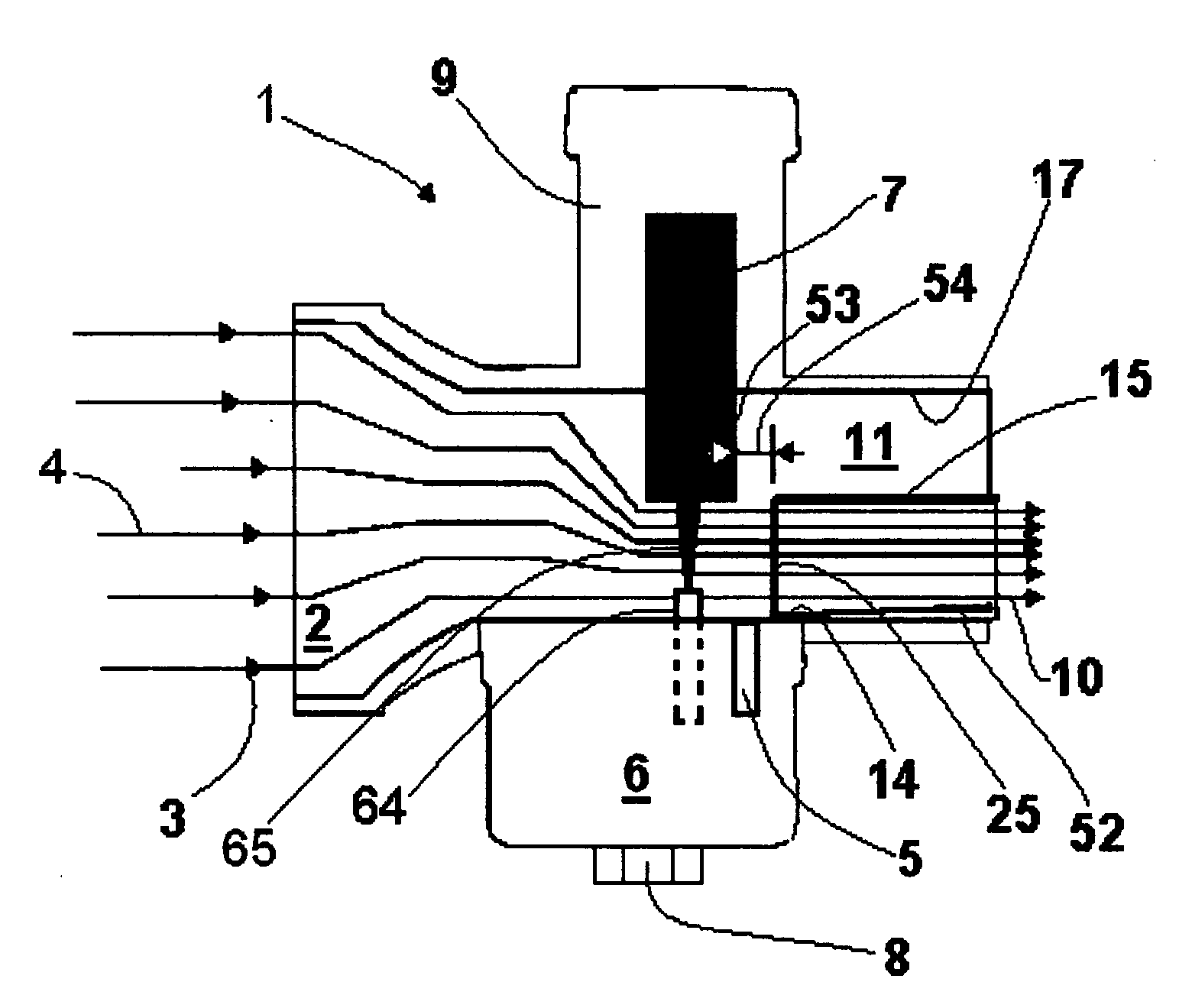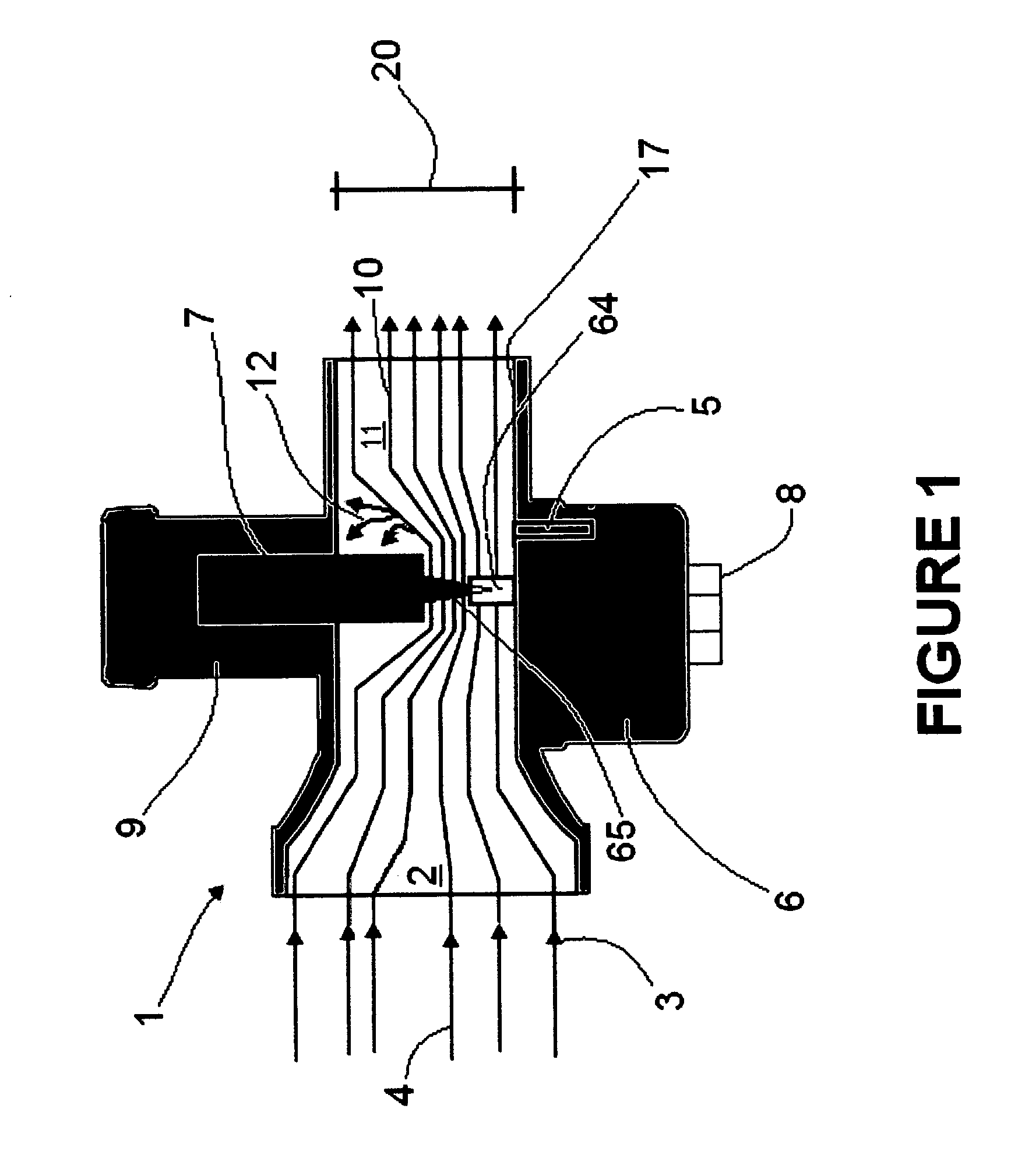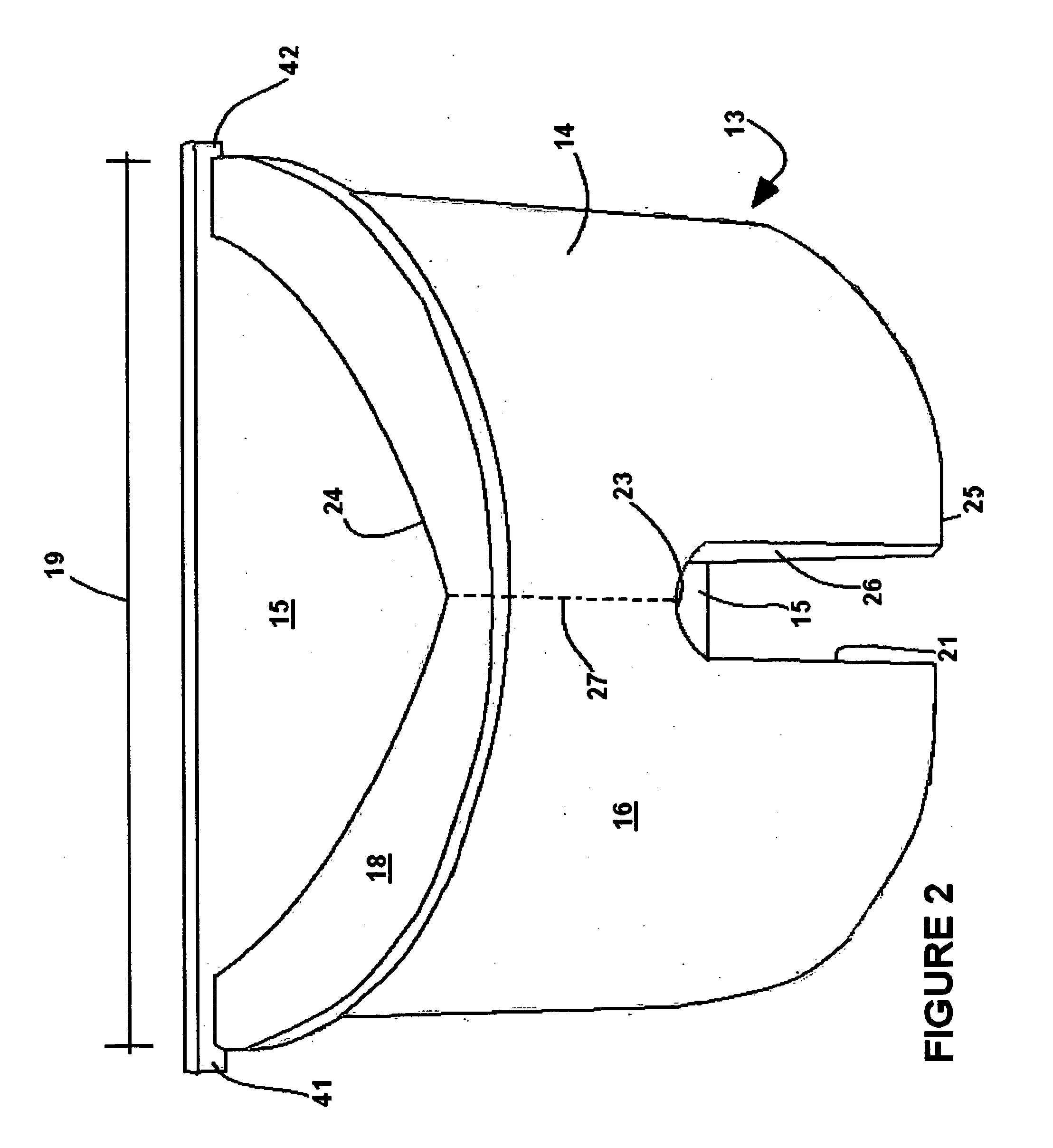Second venturi insert providing air/fuel mixture velocity enhancement
a technology of fuel mixture and venturi insert, which is applied in the field of carburetor venturi structure and accessories, can solve the problems of large bore carburetor being relatively inefficient, promoting poor mixing of fuel and air, and both turbulence and mixture velocity, so as to reduce the air flow, accelerate more rapidly, and increase the air velocity
- Summary
- Abstract
- Description
- Claims
- Application Information
AI Technical Summary
Benefits of technology
Problems solved by technology
Method used
Image
Examples
Embodiment Construction
[0030] Referring generally to FIG. 2, the carburetor insert 13 of the present invention is seen to include a venturi component 14 and an airfoil or wing component 15. The venturi 14 is formed to have an outer wall 16 shaped generally as a semicircular cylinder that is dimensioned to fit snugly within the cylindrical bore 17 of a carburetor 1. The venturi 14 includes a lip 18 that has an outer diameter 19 somewhat greater than the inner diameter 20 of bore 17. The venturi 14 is intended to be inserted into the bore 17 and the lip 18 provides a positive mechanism for preventing insertion beyond the desired point. Further, the venturi 14 includes a cutout or void region 21 which is intended to provide clearance for the carburetor pilot fuel jet 5. If the venturi 14 were to be inserted too far into the bore 17, the edge 23 of the cutout 21 might collide with and damage the fuel jet 5.
[0031] The venturi 14 may be composed of any rigid, fuel resistant material such as metal or plastic. A...
PUM
| Property | Measurement | Unit |
|---|---|---|
| angle | aaaaa | aaaaa |
| angle | aaaaa | aaaaa |
| angle | aaaaa | aaaaa |
Abstract
Description
Claims
Application Information
 Login to View More
Login to View More - R&D
- Intellectual Property
- Life Sciences
- Materials
- Tech Scout
- Unparalleled Data Quality
- Higher Quality Content
- 60% Fewer Hallucinations
Browse by: Latest US Patents, China's latest patents, Technical Efficacy Thesaurus, Application Domain, Technology Topic, Popular Technical Reports.
© 2025 PatSnap. All rights reserved.Legal|Privacy policy|Modern Slavery Act Transparency Statement|Sitemap|About US| Contact US: help@patsnap.com



